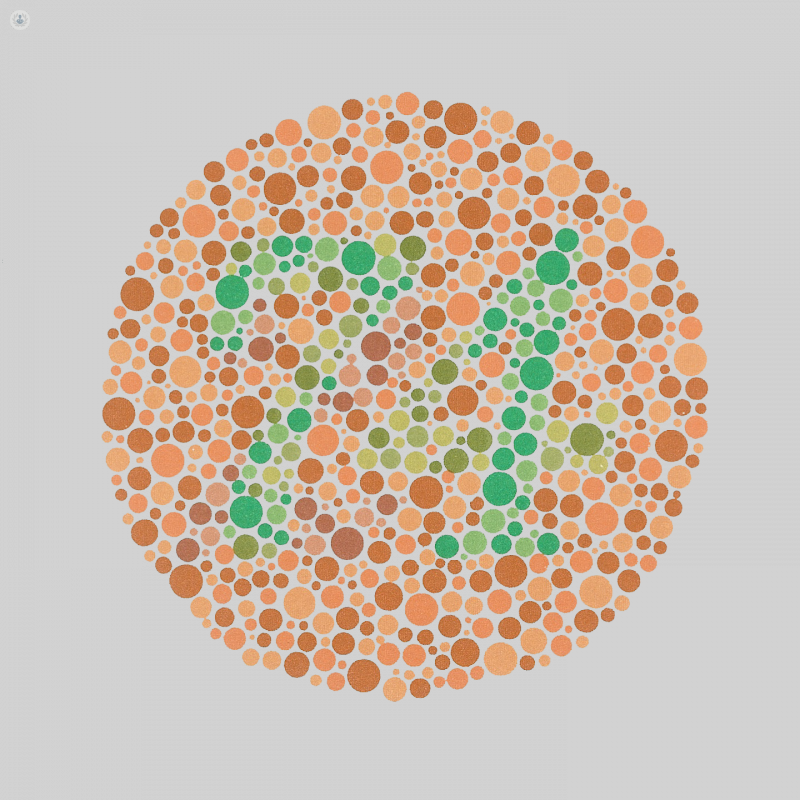


What is colour blindness?
Colour blindness (also known as colour vision deficiency) makes it difficult to identify and distinguish between certain colours. Total colour blindness (achromatopsia) is quite rare and it causes an inability to see any colour at all and an increased sensitivity to light.
Colour vision deficiency can be classified into different categories, according to the following characteristics:
- Protanopia is a form of red-green colour blindness. It causes reduced sensitivity to red light, meaning the patient struggles to see different shades of red. They may confuse darker reds with black, and lighter shades with yellow and green. Violet, lavender and purple may appear blue due to the dimming of the red components of these colours. Protanomaly is a less severe variant.
- Deuteranopia is another form of red-green colour blindness, which causes different colour vision errors at different wavelengths of light. Deuteranomaly is less severe.
- Tritanopia is the inability to distinguish between blues and greens, and also between yellow and pink. Tritanomaly is a less severe form.
What are the symptoms of colour blindness?
People affected from colour vision deficiency find it hard to tell the difference between colours. Protanopia, deuteranopia, protanomaly and deuteranomaly principally cause problems distinguishing between reds, yellows and greens, while tritanopia and tritanomaly cause issues telling between blues and greens.
How is colour blindness diagnosed?
There are two tests that can be done to diagnose colour vision deficiency. The first one is the Ishihara test, where the patient is asked to identify numbers contained within images made up of different coloured dots. This is the most commonly used test by ophthalmologists. If you’re not suffering from colour blindness, you’ll be able to identify the right number. On the contrary, if you’re affected from it, you’ll read a wrong number or you won't see any number at all. The second one is the Farnsworth-Munsell hue test. It is a more detailed test, compared to the Ishihara one, and you’ll be shown a series of coloured discs which you’ll have to arrange by hue.
What causes colour blindness?
Colour blindness is usually a consequence of the fact that the colour-sensitive cells in the eyes, called cones, are either missing (in the case of protanopia, deuteranopia, tritanopia and achromatopsia) or not working properly (protanomaly, deuteranomaly and tritanomaly). This can be due to genetic factors or it can arise as a complication of other issues (acquired colour vision deficiency), such as:
- Lens opacity
- Alcohol abuse
- Brain injury
- Other eye conditions
How can it be prevented?
Inherited colour vision deficiency can’t be prevented. Acquired colour blindness may be preventable by avoiding an excessive alcohol consumption, going for routine checks and avoiding brain injuries.
How is colour blindness treated?
As of yet, colour vision deficiency has no definitive cure. However, there are special glasses which may help patients to distinguish colours better.
Which doctor should I see?
You should see an ophthalmologist if you have any difficulties with your colour vision.
